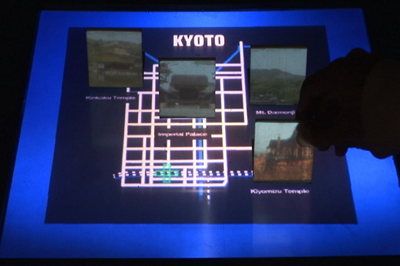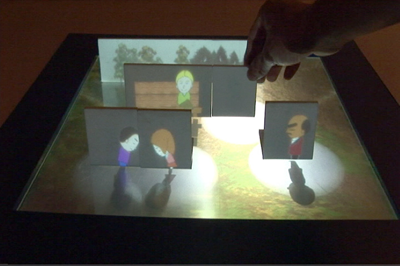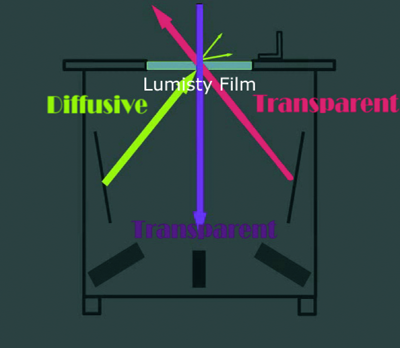Tabelscape Plus is a new type of display system for digital kiosks, multiple-aspect viewers, and tabletop theater that uses placed objects as projection screens and input devices.
Enhanced Life
Tablescape Plus integrates diverse technologies:
- 1. Special optics based on material that is normally used for window blinds. The material is used as a horizontal tabletop screen.
- 2. A unique method of calibrating camera-projector combinations to display images of a horizontal tabletop screen and upstanding objects.
- 3. The AR Toolkit library detects the position and direction of objects placed on the tabletop. While head-mounted displays are often used in the field of augmented reality, Tabletop Plus does not require any special equipment.
- 4. Tangible user interfaces to deliver a broad range of interaction.
- 5. Software architecture for collaborative display of heterogeneous information.
Goals
The overall goal is to increase the availability of physical objects placed on an interactive tabletop display. The project has three subsidiary goals:
 |
 |
|---|---|
application for digital kiosk |
application for tabletop theater |
- 1. To develop a display system that can project separate images onto a horizontal tabletop screen and vertically placed tabletop objects simultaneously.
- 2. To add interactivity to this new display system by introducing camera-based tracking methods and infrared optical systems.
- 3. To explore the new paradigm of Tablescape Plus applications by developing attractive and specialized demos including games, simulation, education, and scientific visualization.
Innovations
Tablescape Plus represents four key technical innovations:
 |
 |
|---|---|
hardware design |
characteristics of lumisity |
 |
 |
|---|---|
Basic Design of Tiny Display (Left: front view, Center: side view, Right: Marker at the bottom) |
System Overview |
- 1. Optical design of a special screen system that is is diffusive from one privileged direction and has high transparency to incoming light from other directions. The diffusive direction is used to show images on a tabletop screen. By projecting images from the transparent direction, the system can also project on the surfaces of objects placed vertically.
- 2. A method for detecting the tabletop objects from inside the system. An infrared camera is installed underneath the table facing upward. Infrared light is projected from the side of the camera to the screen, and a retro-reflective material of a known shape is attached underneath each object. When physical objects are placed, the ID, position, and rotation of each object are recognized by using the ARToolKit library.
- 3. A method for calibrating projector images geometrically. With this method, each projector can display identical parts of images onto identical positions.
- 4. A method for harmonizing projected images. Each projected image should change relative to the other images according to the input information of placed objects.

